What do locals do in Rome? We are here to answer that question!
The Eternal City, one of the world’s top tourist destinations, has so much to offer: churches (including the one that rules them all), museums, scenic views, inspiring artworks and delicious food.
You can read about these in many guides and you’ll follow more or less the same path of thousands of other tourists.
Nevertheless, here you can learn the unusual things to do in Rome like a local and live the city like the Romani.
Well, when in Rome…
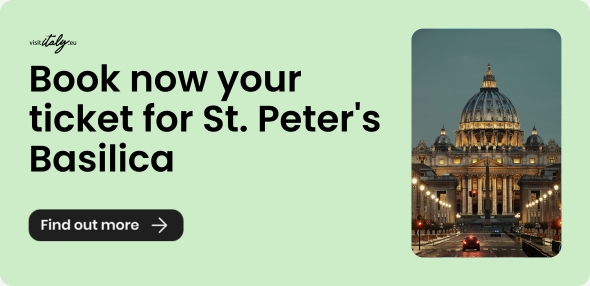
Non touristy things to do in Rome like a local
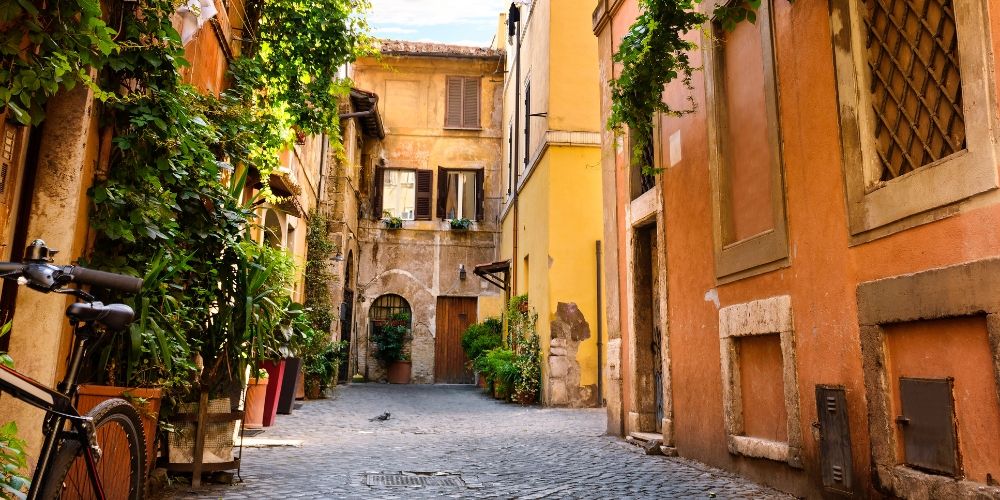
Curious to find out what are the best things to do in Rome like a local?
We’ve shortlisted a few activities and must-see spots to help you explore the city like a pro.
Just follow our suggestions to discover the most romantic belvedere, thrilling sports events loved by football fans, and a delicious tradition that makes Romans queue up at night.
Each experience will give you an authentic perspective on what locals do in Rome.
Don’t forget to take advantage of our Visit Rome Pass, the ultimate tourist pass that grants free or discounted access to over 50 attractions across the city, plus exclusive benefits for transportation.
What do locals do in Rome? Here is everything you need to know.
Get your Visit Rome Pass and explore Rome like a localRome like a local: the podcast
Italy like a local is Visit Italy's podcast that make you discover the most authentic Italy.
Listen to our journey through Rome like a local, narrated by the voice of Christie Peruso.
10. Non touristy things to do in Rome like a local. Grab a nighttime sweet bite

As the saying goes, “When in Rome, do as the locals do”. So, how about a late-night snack?
The "nighttime pastry” is a real tradition in Rome.
Every Roman has their preferred night bakery shop, whether it is for maritozzi with cream or for pizzas.
Late night gastronomy knows no bounds and the offer is huge: fried donuts and fragrant croissants stuffed with cream, nutella or pistachio, saccottini and sandwiches.
Between sunset and sunrise, you often have to queue up to grab your favorite nocturnal delight.
This tradition was about to disappear, as the municipality was ready to limit the opening of pastry shops to 2am: fortunately, citizens complained and these shop can stay open all night.
Here are some popular places to fill your belly at night.
Near Castro Pretorio, you'll find "Pasticceria Lambiase", an original patisserie specialised in the sorchetta doppio schizzo: try this sweet pastry with chocolate and cream and then ask the locals what does the name mean.
For a traditional Roman sweet, treat yourself at the "Maritozzaro" in Monteverde, which offers giant tasty maritozzi (a sweet pastry packed full of whipped cream).
The "Cornetteria San Lorenzo" is the place to go in the namesake district, while in Cinecittà there is "Te la do io la brioscia" with its giant pangoccioli (a sort of soft, sweet brioche) stuffed with any type of spread. Finally, in the Portuense district, the "Cornettone" is a must for the originality of the fillings.
There is no better way to end a night out in Rome like a local than by mingling with the locals for a well-deserved night treat: find your favourite spot and delve in.
Book Rome Guided Food Tour9. Discover the lesser known parks
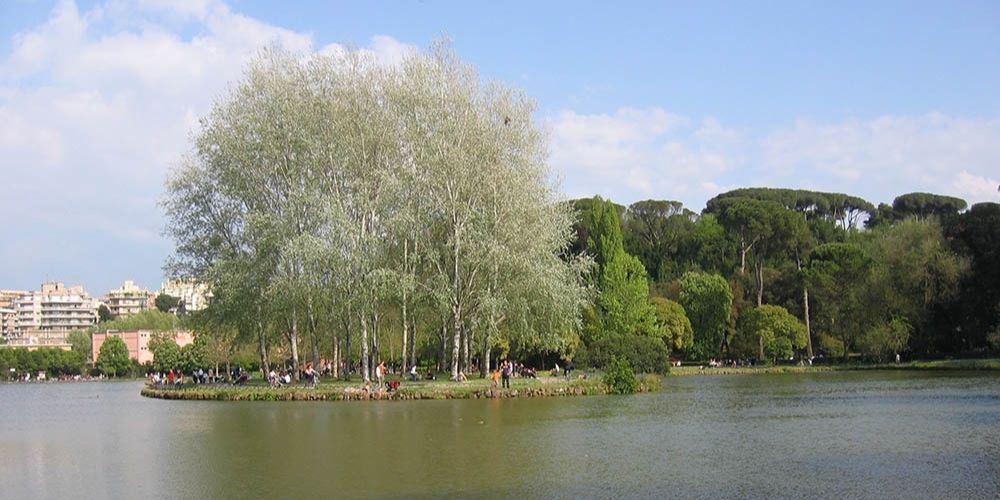
Each district of Rome has a green space loved by the locals.
As for the public parks, Rome's city centre boasts three unmissable gems, packed with tourists and locals alike: the majestic Villa Borghese with its Pincio belvedere, Villa Dora Pamphilj (with lots of dirt roads for joggers) and Villa Torlonia.
The best way to appreciate the green spaces of Rome like a local is to explore the lesser known parks, but nonetheless full of charm and activities to do.
We have shortlisted a few.
Villa Ada Savoia in the Parioli area is a former hunting reserve of the Savoy family and the fourth largest park in Rome. It is a popular green area, with a skate rink and path for joggers. Plenty of events happen in summer. If you are into industrial archeology, we recommend a visit to the Savoy bunker which served as an air-raid shelter.
Villa Sciarra in Trastevere is a small park at the foot of the Janiculum hill, excellent for a relaxing walk among statues, picture-perfect hedges and fountains.
The Parco di Colle Oppio is located in the heart of Rome, close to the Colosseum, on what used to be the Bath of Titus and the Domus Aurea. You can enjoy the Roman antiquities walking among ruins, meadows and tree-lined avenues.
Finally, the Parco dell'EUR is located south of Rome in the EUR district. The park is built around the artificial lake, often used by rowers for training, and boasts a huge green space with waterfalls. A spot of great beauty, perfect to relax if you are in the area.
8. Attend a sport event
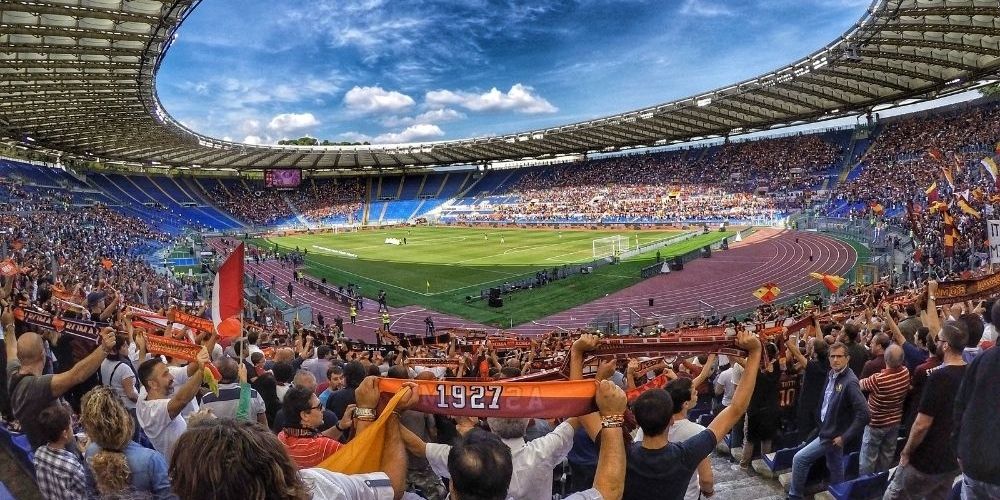
Rome is a sport city and the Romans love their city's teams.
Football, tennis, rugby and basketball dominate the sport scene, but Serie A football is undoubtedly the king.
The rivalry between Rome and Lazio can be seen on the walls and perceived by the excited murmur of the people on the street the week before the derby.
For a 100% genuine sports experience, we recommend attending a Roma or Lazio home game at the Olympic Stadium, one of the main Italian stadium to know and visit: fiery atmosphere and good football. If you have the chance to attend the "Derby della Capitale", do not miss the opportunity to experience one of the hottest football games in Europe. It is among the most authentic things to do in Rome.
On the other hand, tennis fans will love the Internazionali BNL d'Italia.
This is the most important tennis tournament in Italy: it is played in May in the splendid setting of the Foro Italico, between white marble statues and the red clay courts: a 12-day tennis event, a very fun and a little mundane.
Men's and women's tournaments are held simultaneously. Tickets can be purchased online and offer different day pass combinations. Go early in the morning to approach the athletes as they warm up, possibly getting an autograph.
If you like rugby, the go-to place is the Flaminio Stadium, where the Italian rugby team plays the international matches: an exciting experience with passionate local tifosi.
Finally, Rome Marathon takes place every spring, beginning and ending at the majestic Imperial Forums, attracting great athletes from all over the world. At the same time, amateur runners can sign up for the "Fun Run La Stracittadina" which has become the largest non-competitive marathon in Italy.
Book entrance Rome's Stadio Olimpico7. Do a picnic under a Roman aqueducts
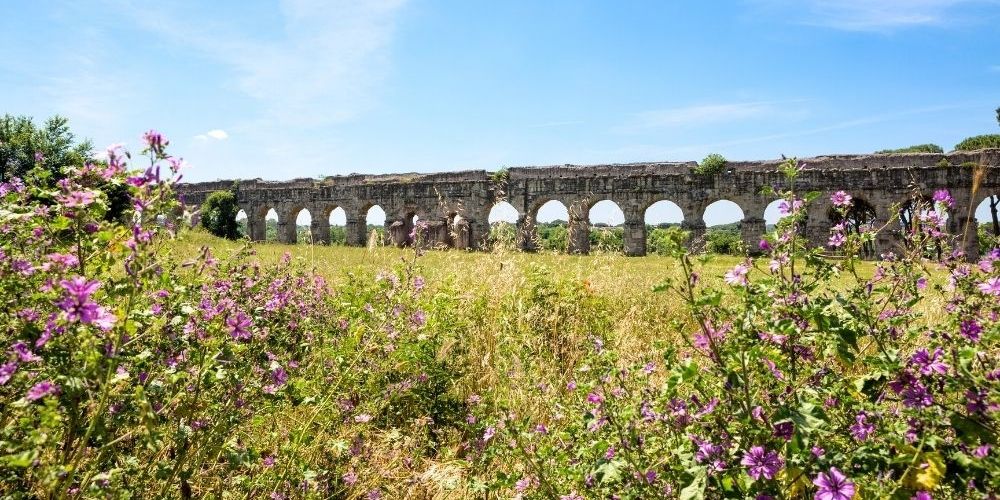
Where do locals go in Rome? One of the favourite spots for a chill-out day is the impressive Parco degli Acquedotti, a stunning green space southeast of the city.
The park covers 240 hectares in the Appio Claudio district and is the ideal place for a picnic or a walk in an area that was a crucial hub for the water supply of Ancient Rome.
Here the beautiful countryside mixes with classical symbols.
You can observe the ruins of seven different aqueducts used in Ancient Rome, as well as other places of archaeological interest.
Romans love this park, which offers many activities, sports facilities (in particular football and tennis) and paths for jogging and mountain biking.
Get your picnic basket filled with Roman street food and find your spot in the grass.
The Parco degli Acquedotti can be reached easily from the centre with the Metro A (Giulio Agricola and Sub Augusta stops) or with the 559, 590, 650 and 654 buses.
The park has also made its appearance on the silver screen on several occasions, from Fellini's La Dolce Vita to The Great Beauty by Sorrentino.
Book Urban Hike to Parco degli Acquedotti6. Snap a photo of Totti's mural
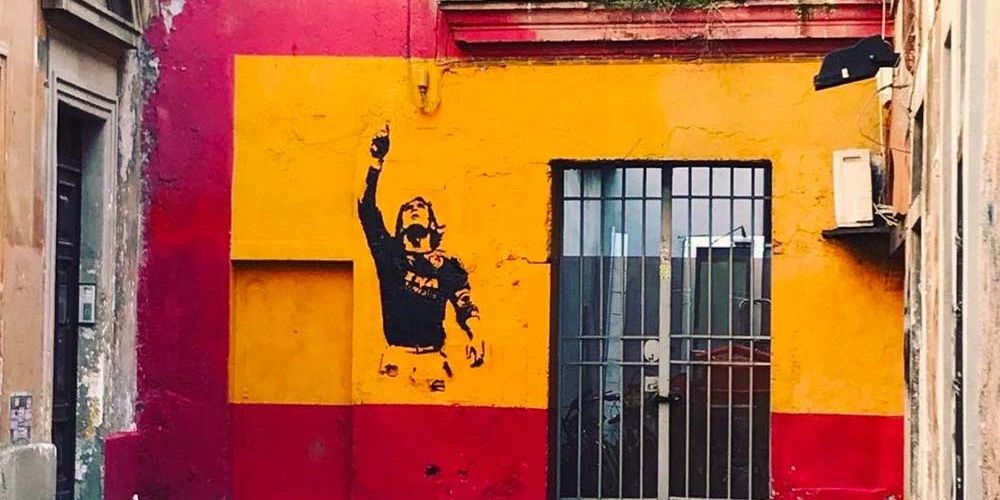
Just like the carbonara pasta and the Colosseum, Francesco Totti is one of the symbols of Rome.
The former Roma captain was portrayed on a wall in the very heart of Rome, the Rione Monti (find here how to visit Rome's coolest neighborhood), to celebrate the Scudetto victory back in 2000.
The iconic mural is the destination of a secular pilgrimage by Roma fans.
Looking for Totti's mural is an opportunity to explore the narrow alleys of Rione Monti, a very authentic area away from the hottest touristic routes.
Also, if you are wondering what is free today in Rome, you’ll find here a bunch of low-to-zero budget ideas for spending the afternoon.
We recommend a walk along Via Panisperna, a lively street of the Rione Monti, until Piazza dell’Esquilino with its splendid Basilica of Santa Maria Maggiore.
For a truly local experience, head to the local market called Mercato Monti (Metro A, Cavour), one of the top places for rare and vintage items where locals shop in Rome.
Stroll between Via della Madonna dei Monti and Via dei Neofiti, narrow and very scenic, with ivy on the walls and several local taverns where you can grab a bite. There are plenty of traditional shops as well, where you can buy souvenirs from Rome.
The yellow and red artwork is in a cul-de-sac called via del Pozzuolo, ready for a photo.
5. Order an aperitivo at Pigneto
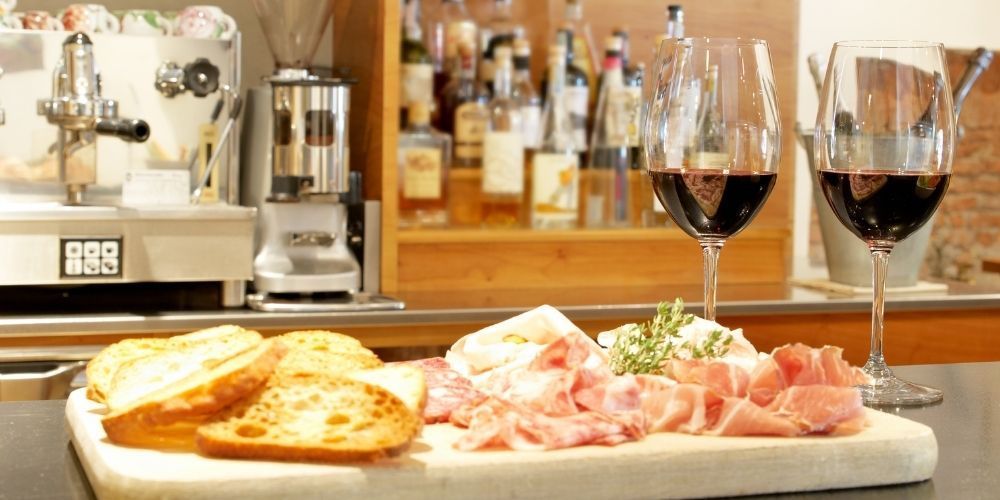
Where do locals in Rome hang out? Pigneto, one of the liveliest neighbourhoods in the city, is among their top choices.
Featured in many Italian films, Pigneto went from being a working-class suburb to becoming an artistic/hipster neighbourhood, keeping intact its politically active and anti-fascist spirit.
Today here lives an interesting mix of students, workers and foreigners: there is a cheerful atmosphere with lots of people on the street.
Thanks to its proximity to La Sapienza University and the recently created metro C, Pigneto has undergone a gentrification process that has reshaped the neighbourhood.
Traditional restaurants and bars now go hand in hand with independent bookstores, theatres and LGTBQ-friendly cultural centres. Last but not least, the Pigneto street market which is held every morning (except Sunday).
And now let's talk about the aperitivo.
Pigneto is the perfect place to enjoy an aperitif along with the locals: there is plenty of choices and almost all bars are located near the Pigneto station of Metro C, between Via del Pigneto and Via Braccio da Montone.
Check the daily offers and pick the aperitivo bar you prefer: along with the classic snacks you can chose from vegetarian options, cold meat cuts, focaccias and cheese bites. Order a negroni or a spritz and enjoy the food.
Get there during happy hour time (usually after 5pm): bars stay open until late night making Pigneto a staple for the Roman nightlife.
If you are looking for the true offbeat Rome, that's the place to be.
4. Enjoy the view from the Janiculum belvedere
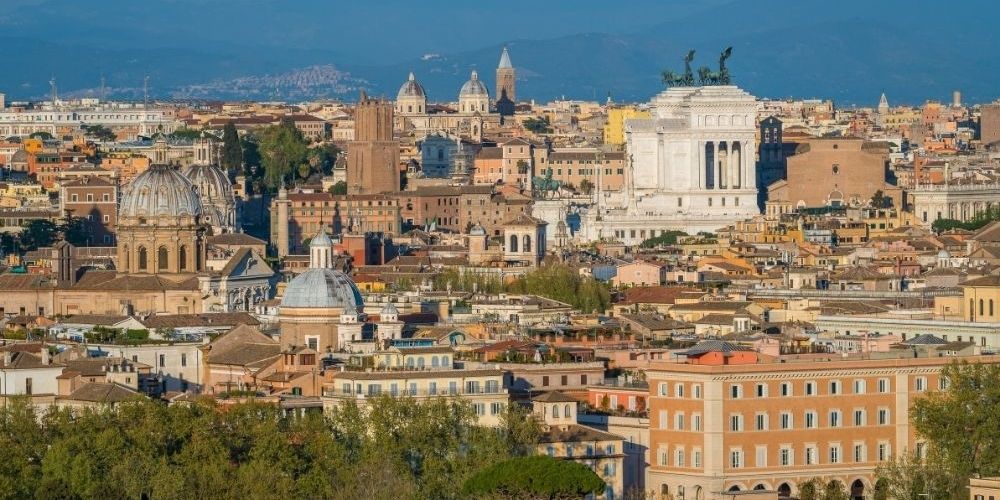
When Romans say "Gianicolo "(the Janiculum hill), they think of the most beautiful and romantic panorama of Rome.
The belvedere of the Janiculum hill dominates Rome from the top, allowing visitors to see the most famous monuments of Rome in a single glance. On clear winter days you can even see the nearby Alban Hills.
For experiencing some authentic things to do in Rome, join the couples romantically hugging on the belvedere (it's not uncommon to see a marriage proposal at sunset) or sit on the railing to take a picture from the best angle.
The view at sunset time is just unbelievable, with the domes and marbles of Rome lit up in red. Alternatively, go to the Janiculum at noon to experience the traditional cannon shot (12 o'clock, don't be late!).
The cannon shot was introduced by Pope Pius IX on December 1, 1847, as a signal to coordinate the bells of Rome.
The belvedere on the Janiculum Hill is located in Piazza Giuseppe Garibaldi and can be reached by bus 870.
After the view, head down walking near the magnificent Fontana dell’Acqua Paola and through the Botanical Garden ("Orto Botanico"). Or look for a terrace bar for a drink with a view.
3. Taste Roman street food
Street food in Rome is diverse, authentic and tasty: the Romans would say “bono”.
If you suddenly get hungry, do what locals do in Rome: forget the restaurant and head to a bakery instead or look for a "zozzone" (a food truck) to enjoy the delights that the city can offer.
Just to name a few...
The Roman pizza that you can buy in a bakery is beloved by locals. A square slice of fragrant pizza with “mortazza” (mortadella) is just unbeatable. Let's not forget the classic pizza by the slice, good for lunch or as a snack. A cold beer is the best friend of both type of pizzas.
If you are into fried food, there is enough cheap treats to move your residence to Rome: just think of the supplì, the Roman version of Sicilian arancini: base version is mozzarella, rice and tomato, but there are many variants. Another classic is the tasty fiori di zucca fritti ("fried courgette flowers"), which often go hand in hand with crunchy baccalà ("fried cod") to take away. Have them served in a paper cone, together with olive ascolane ("fried olives stuffed with meat"), and nibble them as you wander around the city.
Sandwiches, or panini, are another local staples: you can't say no to a panino with salsiccia ("sausage") or with porchetta (roast pork). Just look for the many food trucks that the Romans call zozzoni ("the dirty ones"): definitely not be recommended by your nutritionist but they know how to calm your hunger down.
In winter, do not miss the roasted chestnuts sold at the corners of the streets, a true seasonal favourite for those who want to experience Rome like a local.
2. Watch the sunset from Giardino degli Aranci
So beautiful and so little known by tourists.
The Giardino degli Aranci is where locals go in Rome when they want to escape the crowds and enjoy a magical panorama. For those who live on the Aventine hill, this lovely hidden place is the perfect spot to watch the sunset.
The real name of the garden is Parco Savello, because a fort built by the Savelli family once stood here. The nickname with which it is known today derives from the orange trees planted in the garden, which give the park an intense fragrance.
Check the exact sunset time and take Metro B to the Circo Massimo. Get there a couple of hours earlier to explore the historical buildings of the Aventine, all located on Via Santa Sabina (and used by Paolo Sorrentino in his films).
Start from the Basilica of Santa Sabina and the Church of Sant’Anselmo, ending up peeking through the keyhole of the Villa del Priorato di Malta, to see the St. Peter's Dome from a very original location. Thanks to the optical effect created by the row of trees and the small hole, the "Cupola" seems huge and very close to the observer.
Finally, step into the Giardino degli Aranci, breathing in the fragrant air, and take a stroll before settling at the belvedere. From here, you'll witness one of the most stunning sunsets in the city, a secret that only those who know what locals do in Rome truly get to enjoy.
The fairytale atmosphere and the silence of the park make the moments spent in the garden unique.
1. Shop in the local markets
Where do locals shop in Rome? The answer is simple: street markets!
Such places are the quintessence of Roman life, a busy kaleidoscope of colours and flavours, so those looking for unusual things to do in Rome should definitely visit one of the city's mercati.
Markets are worth a visit to have a taste of the folklore and everyday life of the residents. Furthermore, they’re a great place to discover how to dress like a local in Rome and get inspired.
The Testaccio Market is perhaps the most authentic with butchers, fishmongers, vegetable stalls and all the products that you can find on Roman tables: watch out for pecorino romano and the local artichokes. You can also buy flowers and clothes. Closed on Sundays. A stone's throw from Testaccio, check out the Trastevere Market, a smaller but very popular attraction in Rome's most picturesque district.
Porta Portese Market is the most famous non-food market in the city and takes place on Sundays. It has been a meeting place for the Romans since 1945, when it was the flea market and also the headquarter of the "black market". The stalls populate Via Portuense from early in the morning, selling everything you can imagine: vinyls, furniture, old books, watches, stickers and much more. Take tram 3 and look for the lost gems among the junk.
For clothing and accessories, we recommend the Via Sannio Market near San Giovanni: far from the golden years of the 1980s, it is still interesting, especially for jeans and hip hop clothing.
If you are in the city center, do not miss the Campo de' Fiori Market, taking place in the only secular square in Rome, without churches. Active since 1869 and rich in history, this is an open-air market whose varied offer ranges from flowers to meats, fruit and vegetables.
Finally, the Mercato Rionale Nuovo Esquilino is the most multi-ethnic in the city and is located just behind the Termini station. Explore to find exotic products, vegetables and spices from Africa or the Middle East, obviously not counting traditional Roman products.
Book Rome Market TourExtra: Take a day trip!
For a change of scenery from the bustling streets of Rome, there is nothing better than a day trip outside the city.
If you want to experience what locals do in Rome when they crave fresh seafood, hop on a train or car and head to Fiumicino, on the Lazio coast, for an exquisite lunch.
Fiumicino boasts many good quality restaurants cooking tasty local catch. The dilemma doesn't change: will you order frittura di pesce (fried fish) or spaghetti allo scoglio (seafood spaghetti)?
For a fun night out, follow the Romans driving to the town of Ariccia on the Alban Hills, eating and drinking in one of the numerous tavernas (called "fraschette"). This is exactly where locals go in Rome (or rather, just outside) when they want a satisfying meal with friends. The undisputed protagonist
The undisputed protagonist of dinner is the famous porchetta di Ariccia (mouth-watering pork roast). Drink the local wine called romanella and fill your plate with traditional food: do not stop at the classic Roman first courses, order the giant olives of Gaeta, the buffalo mozzarella and the coppiette (spicy strips of dried pork meat). The vibe is great and the view from the Ariccia bridge is stunning!
Finally, if you are in Rome in summer and the heat is killing you head to Ostia, the pearl of the Roman coast, and take a dip in the sea: it might not be the Caribbean Sea, but it always works against the heat. Just take metro B to Piramide and then the train to Ostia Lido. A note that Ostia tends to be very crowded on summer weekends.
If you prefer a sea with crystal clear water and fine white sand, take the train from Roma Termini to Sperlonga (just over an hour) and enjoy one of the best beaches of the Tyrrhenian Sea in an enchanting village of the Latium coast.
How not to be a tourist in Rome?
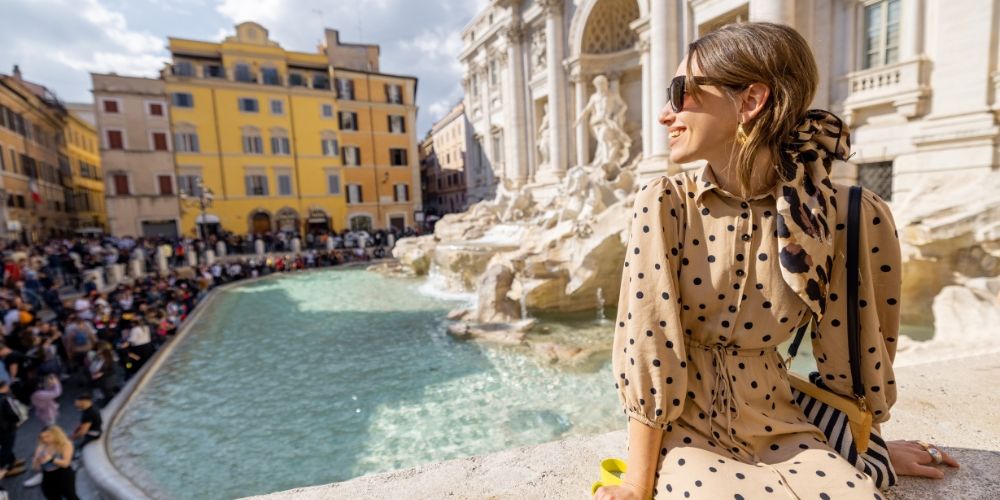
At this point, you definitely have a few more tricks up your sleeve to navigate Rome like a local and avoid the usual tourist traps. Here are some bonus useful tips to help you blend in:
How to dress like a local in Rome: Keep it stylish but comfortable. If athletic wear feels too "touristy" for you, a nice jeans-and-top combo is a perfect go-to from morning to night. If you're visiting a church, be sure to cover your shoulders and knees!
What time do locals eat dinner in Rome? They typically eat dinner between 8:00 PM and 10:00 PM. It's a bit later than you might be used to, but that's when the city comes alive.
How do locals get around Rome? Walking, biking, or using public transportation are the most common ways for Romans to get around. The metro, buses, and trams are convenient options, especially for those exploring areas beyond the main tourist spots. Nevertheless, If you want to feel like the stars of Roman Holiday, renting a Vespa never goes out of style.
Where do locals in Rome hang out? Pigneto is one of the neighbourhoods where you'll get a real feel of Roman nightlife. It's the perfect place for an aperitif or late-night drink. Other top spots for good food, drinks, and a lively atmosphere include Trastevere, Testaccio, and Monti.
Always ask yourself “What is free today in Rome?” The city is full of amazing experiences that won’t cost you a euro. Strolling through its famous piazzas and neighbourhoods is completely free, and many churches are packed with incredible art at no charge. Plus, state museums offer free entry on the first Sunday of every month.
Follow those tips, and you are sure to avoid the common tourist pitfalls and visit Rome like a local!
About the author
Written on 13/08/2024

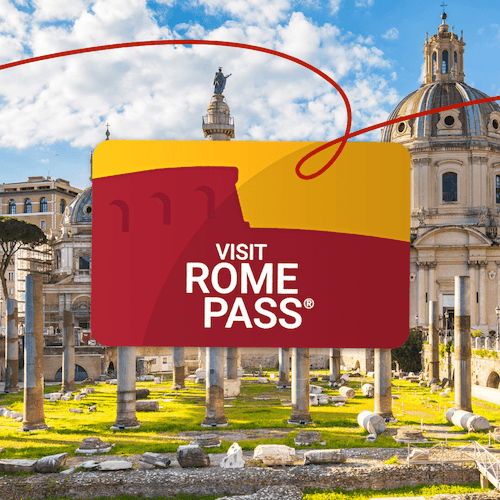
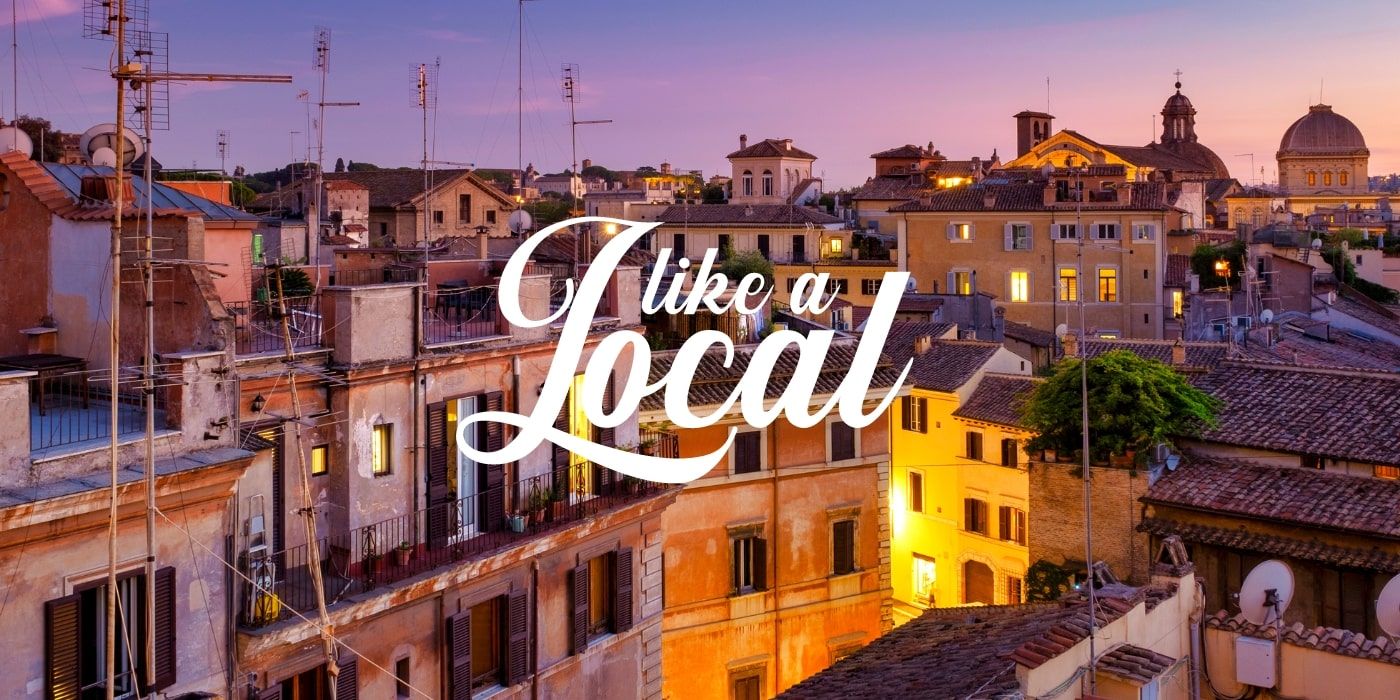

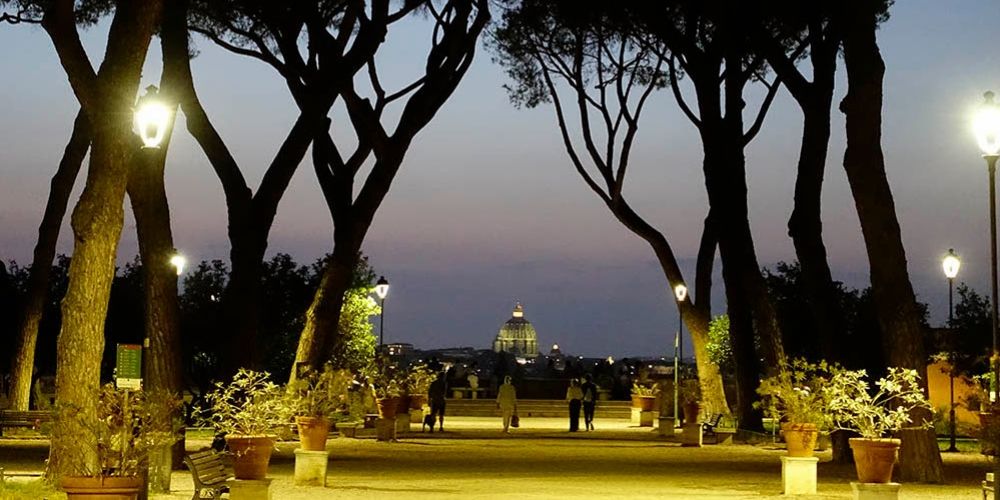
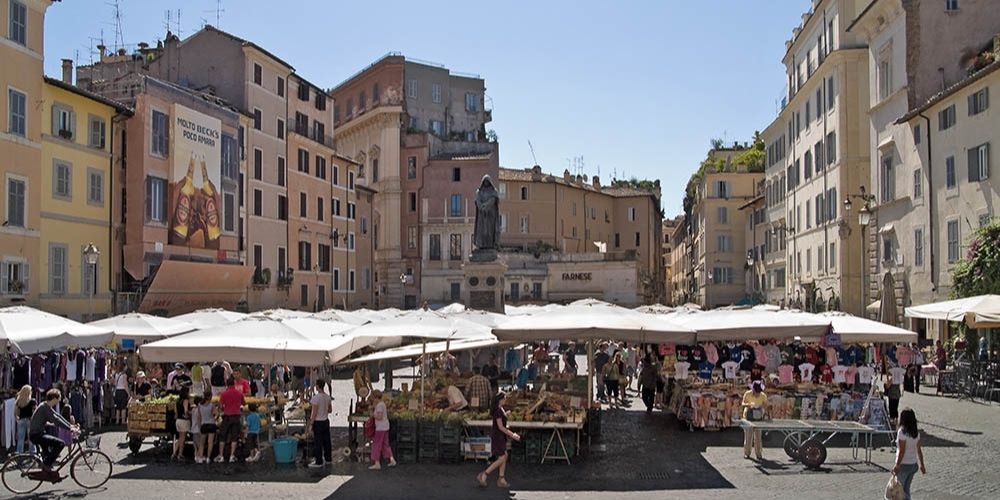


Fabrizio Mariani
Do you want to visit Rome like a local? Then check out 10 things to do to live the city like a true Roman.